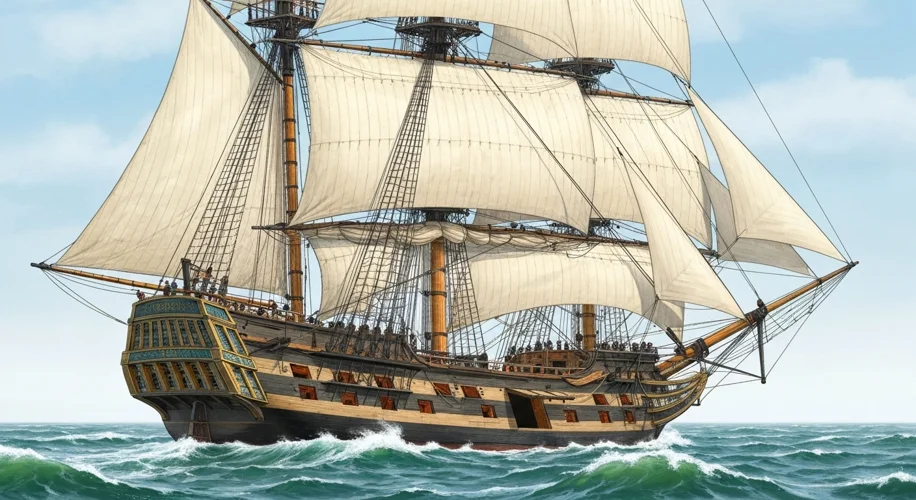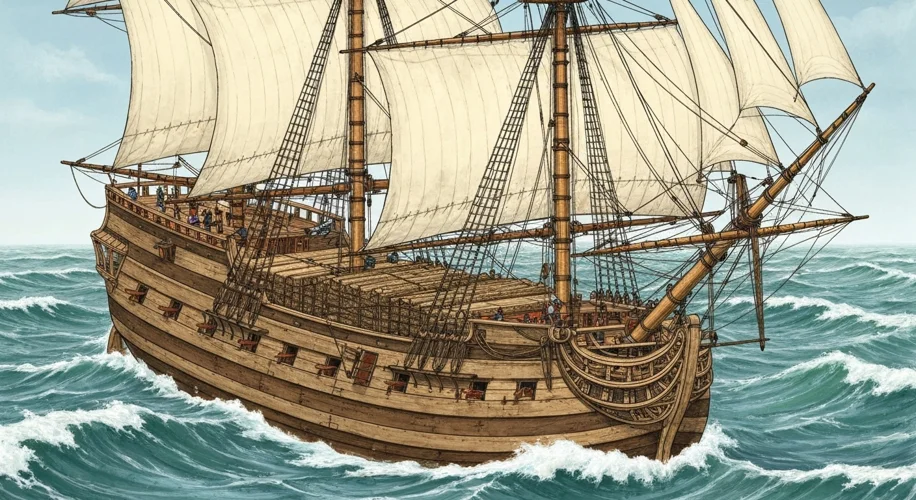The 18th century, a period often painted with the broad strokes of empires clashing and revolutions brewing, was also an era fundamentally driven by the creak of timber, the snap of sails, and the ceaseless hum of global commerce. At the heart of this bustling trade network lay the merchant ship, a vital artery pumping goods and wealth across oceans. But what was the true value of these wooden behemoths, these floating warehouses that connected continents?
Imagine a bustling London dockyard in 1750. The air is thick with the scent of tar, brine, and the distant aroma of spices. Sailors shout orders, the clang of hammers rings out, and the sheer scale of maritime activity is overwhelming. Here, a vessel might be taking shape, plank by painstaking plank. The cost of its construction was a complex equation, heavily influenced by the materials used and the skill of the craftsmen. Oak was the king of timbers, prized for its strength and durability, but it was also heavy and expensive to procure and shape. Pine was often used for masts and lighter construction, while more exotic hardwoods might be employed for decorative elements or specialized fittings.

The size of the ship was a primary determinant of cost. A small brig, perhaps carrying coal along the coast, would be a fraction of the price of a large East Indiaman, designed for the perilous and lucrative voyages to India and China. These larger vessels, often exceeding 100 feet in length and boasting multiple decks and dozens of cannons for defense against pirates and privateers, represented a significant investment. A mid-sized merchantman, around 200 tons, might cost anywhere from £1,000 to £3,000 in the mid-18th century. This was no small sum; a skilled craftsman might earn only £20 to £30 per year.
The construction itself was a labor-intensive process. Shipwrights, caulkers, sailmakers, carpenters, and riggers all played crucial roles. Their wages, combined with the cost of raw materials like timber, iron for fittings, canvas for sails, and pitch for waterproofing, formed the bulk of the initial expense. A ship’s hull, once built, was only the beginning. The cost of provisioning for a long voyage – salted meat, hardtack biscuits, water, rum – and the wages for a crew of perhaps 20 to 50 men, depending on the ship’s size and purpose, added substantial sums before the ship even left port.
Beyond the initial build, the ongoing maintenance and repair of a merchant ship were considerable. Barnacles would cling to the hull, sails would tear, ropes would fray, and the constant exposure to salt water took its toll. Regular dry-docking for cleaning and repairs was essential, adding to the operational costs. The value of a ship wasn’t static; it depreciated with age and wear.
Market value, however, could fluctuate dramatically. Factors such as the ship’s condition, its perceived seaworthiness, its cargo capacity, and the current demand for shipping all played a role. A well-maintained vessel with a good reputation for speed and reliability would command a higher price than a ship showing its age or one that had a history of being lost or damaged. The outbreak of war, for instance, could significantly increase the demand for transport ships and warships, driving up prices. Conversely, economic downturns or disruptions to trade routes could depress values.
Consider the “King George,” a hypothetical 300-ton vessel built in Bristol around 1760. Its construction might have cost in the region of £2,500. Outfitted and provisioned for a voyage to the Caribbean, ready to load sugar and tobacco, its total cost to the owner before any cargo was loaded could easily reach £3,500. Once it completed a profitable voyage, returning with valuable commodities, its market value on sale might be slightly less than its initial investment, perhaps £2,800, if it was in good condition. However, if that same ship was requisitioned by the Royal Navy during wartime, its temporary value could skyrocket, or it could be lost entirely, reducing its value to zero.

The economic landscape of the 1700s was such that ship ownership was a significant undertaking, often the domain of wealthy merchants or joint-stock companies. The capital required to build, outfit, and maintain a fleet was immense. Yet, the rewards could be equally substantial. Successful voyages could generate profits that far outstripped the initial investment, fueling further expansion and cementing the maritime dominance of nations like Great Britain. The valuation of these ships, therefore, was not merely an accounting exercise; it was a critical component of the engine that drove global trade and shaped the course of history.

